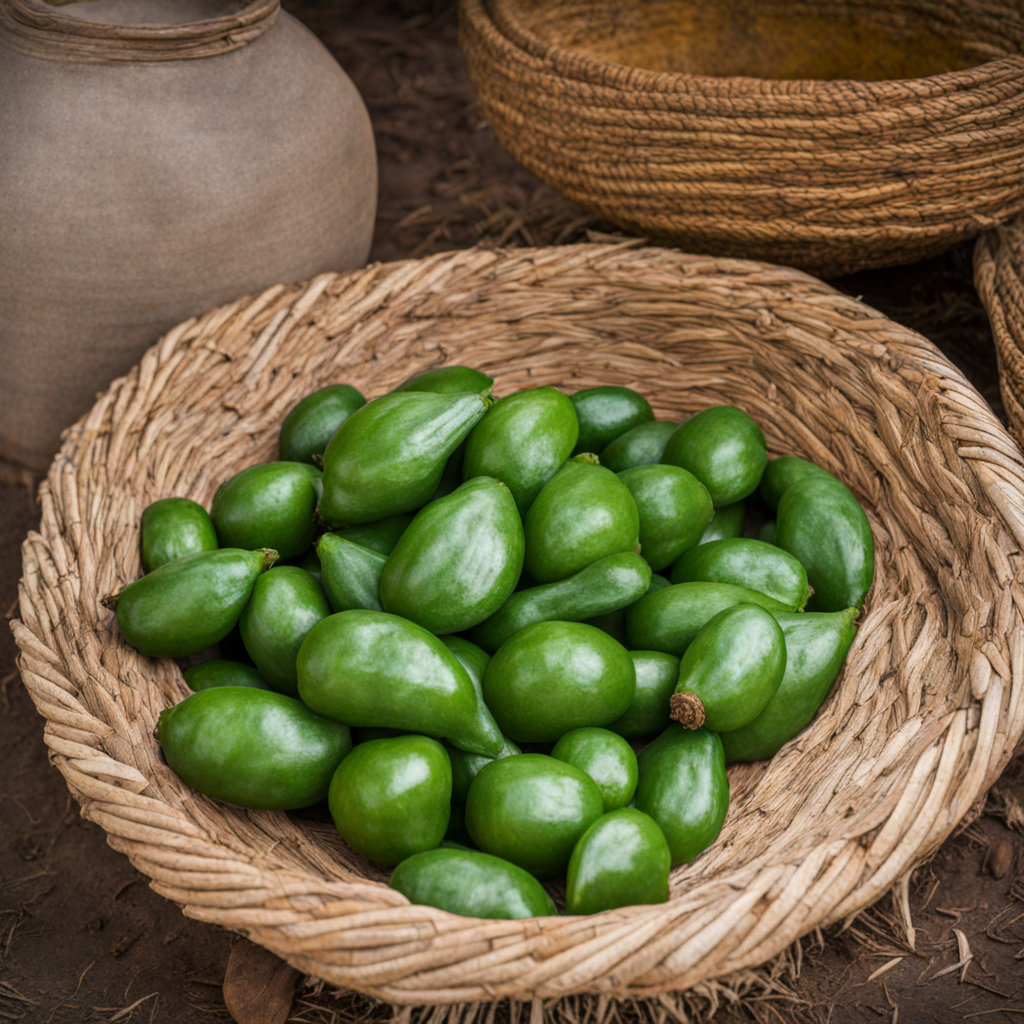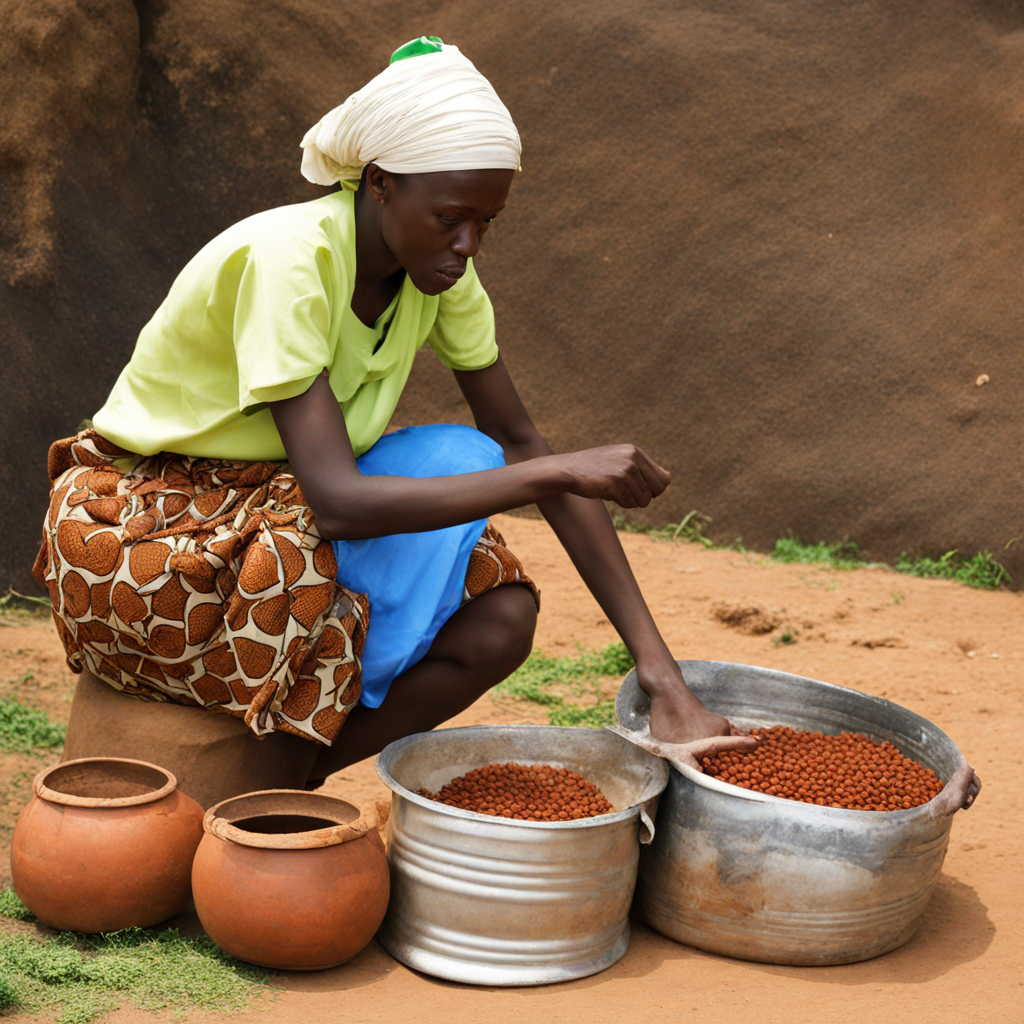Amazi
Amazi is a traditional Rwandan beverage made from fermented milk, offering a unique taste experience that combines both tanginess and creaminess. This delightful drink is often enjoyed by locals and has been a staple in Rwandan culture for generations. The fermentation process gives Amazi its distinct flavor, which can range from slightly sour to pleasantly creamy, making it an intriguing addition to any culinary exploration. It is typically consumed fresh and is often served chilled, enhancing its refreshing qualities, especially in Rwanda's warm climate. One of the most notable aspects of Amazi is its versatility. While it can be enjoyed on its own, it is also used as an ingredient in various dishes, adding depth and richness. It pairs beautifully with traditional Rwandan foods such as Ugali (a stiff porridge made from maize flour) and is often drizzled over grilled meats or used in sauces to elevate their flavor profiles. The creamy texture of Amazi complements the savory notes of local dishes, making it a beloved accompaniment that enhances the overall dining experience. In addition to its delightful taste, Amazi is celebrated for its nutritional benefits. Rich in probiotics, it promotes gut health and aids digestion, making it a wholesome choice for those seeking to explore healthier options. The drink's cultural significance and health properties make it a fascinating element of Rwandan cuisine. For those adventurous food lovers, trying Amazi is not just about savoring a new flavor; it's an invitation to dive into the heart of Rwandan culinary traditions and enjoy a taste that tells a story of heritage and community.
How It Became This Dish
The History of Amazi: A Rwandan Culinary Treasure #### Origin and Ingredients Amazi, a traditional Rwandan food, is a versatile dish made primarily from fermented milk. This staple of the Rwandan diet has deep historical roots, with origins that can be traced back to the pastoralist communities of East Africa. The region's geography, characterized by its highlands and fertile volcanic soil, has facilitated cattle herding for centuries. The Tutsi people, who are historically associated with cattle herding, played a pivotal role in the cultivation and fermentation of milk, leading to the development of amazi. The word "amazi" itself comes from Kinyarwanda, the national language of Rwanda, meaning "water." While it literally refers to the liquid state of fermented milk, the term embodies much more than just a beverage; it represents a cultural nexus around which Rwandan communities have gathered for generations. The primary ingredients of amazi are cow's milk, which is often preferred due to its rich flavor and nutritional value. The process of fermentation occurs naturally, using the bacteria present in the environment, leading to the development of a tangy, slightly sour taste. #### Cultural Significance Amazi is not merely a food item; it is woven into the social and cultural fabric of Rwandan life. Traditionally, it has been consumed during various rituals, celebrations, and communal gatherings. The sharing of amazi, particularly among family and friends, symbolizes hospitality and kinship. In many Rwandan households, the preparation and consumption of amazi are communal activities, fostering bonding and connection within the community. In rural areas, women typically take on the role of preparing and fermenting amazi. This practice is passed down through generations, reflecting a deep cultural heritage and the importance of women in maintaining culinary traditions. During the fermentation process, women often gather to share stories, songs, and laughter, transforming the act of food preparation into a celebration of life and community. Amazi also plays a significant role in Rwandan traditional medicine. It is believed to possess various health benefits, including aiding digestion and providing essential nutrients. In a society where natural remedies are often preferred, amazi has been revered for its probiotic qualities, contributing to overall well-being. #### Development Over Time As Rwanda has evolved, so too has the preparation and consumption of amazi. Historically, amazi was consumed in its most basic form, with little variation. However, as globalization and modernization have influenced Rwandan society, new methods and flavors have been introduced. The traditional process of fermentation remains essential, but contemporary interpretations of amazi now incorporate diverse ingredients. One notable development in the amazi tradition is its adaptation into various dishes. While traditionally served as a drink, amazi can now be found in numerous forms, such as in soups, stews, or even desserts. These adaptations reflect the dynamic nature of Rwandan cuisine, as chefs and home cooks experiment with flavors, textures, and presentations while maintaining the core essence of amazi. Additionally, the increasing awareness of health and wellness in contemporary society has led to a resurgence of interest in traditional foods like amazi. As people seek to reconnect with their cultural roots and prioritize natural, wholesome foods, amazi has found its place in modern diets. Its probiotic properties and nutritional benefits have garnered attention, making it a valued choice for health-conscious individuals. #### The Role of Amazi in Modern Rwanda In modern Rwandan society, amazi has transcended its traditional boundaries. With the rise of urbanization and the influx of international culinary influences, amazi has been reintroduced into the Rwandan culinary scene in innovative ways. Cafés and restaurants now serve amazi alongside international dishes, showcasing its versatility and appeal to a broader audience. The revival of amazi in urban settings is also linked to the cultural pride Rwandans feel for their heritage. Amidst the rapid changes brought about by globalization, there is a concerted effort to preserve traditional foods and practices. Initiatives promoting local cuisine, including amazi, have gained traction, encouraging young Rwandans to engage with their culinary history. Furthermore, the Rwandan government has recognized the value of traditional foods like amazi in promoting national identity and tourism. Efforts to showcase Rwandan cuisine at international events and festivals serve not only to promote tourism but also to cultivate a sense of pride among Rwandans. The narrative around amazi has become part of a larger conversation about sustainability, health, and cultural heritage, as people seek to embrace their roots while navigating a modern world. #### Conclusion The history of amazi is a rich tapestry interwoven with the cultural, social, and economic threads of Rwandan life. From its origins in pastoralist communities to its contemporary interpretations, amazi embodies the resilience and adaptability of Rwandan culinary traditions. It stands as a testament to the enduring importance of food in fostering connections, celebrating community, and preserving cultural identity. As Rwanda continues to evolve, amazi remains a vital part of its culinary landscape, symbolizing not only nourishment but also a deep-rooted sense of belonging. Whether enjoyed in a traditional setting or reimagined in modern dishes, amazi will undoubtedly continue to flourish as a cherished emblem of Rwandan heritage for generations to come.
You may like
Discover local flavors from Rwanda







